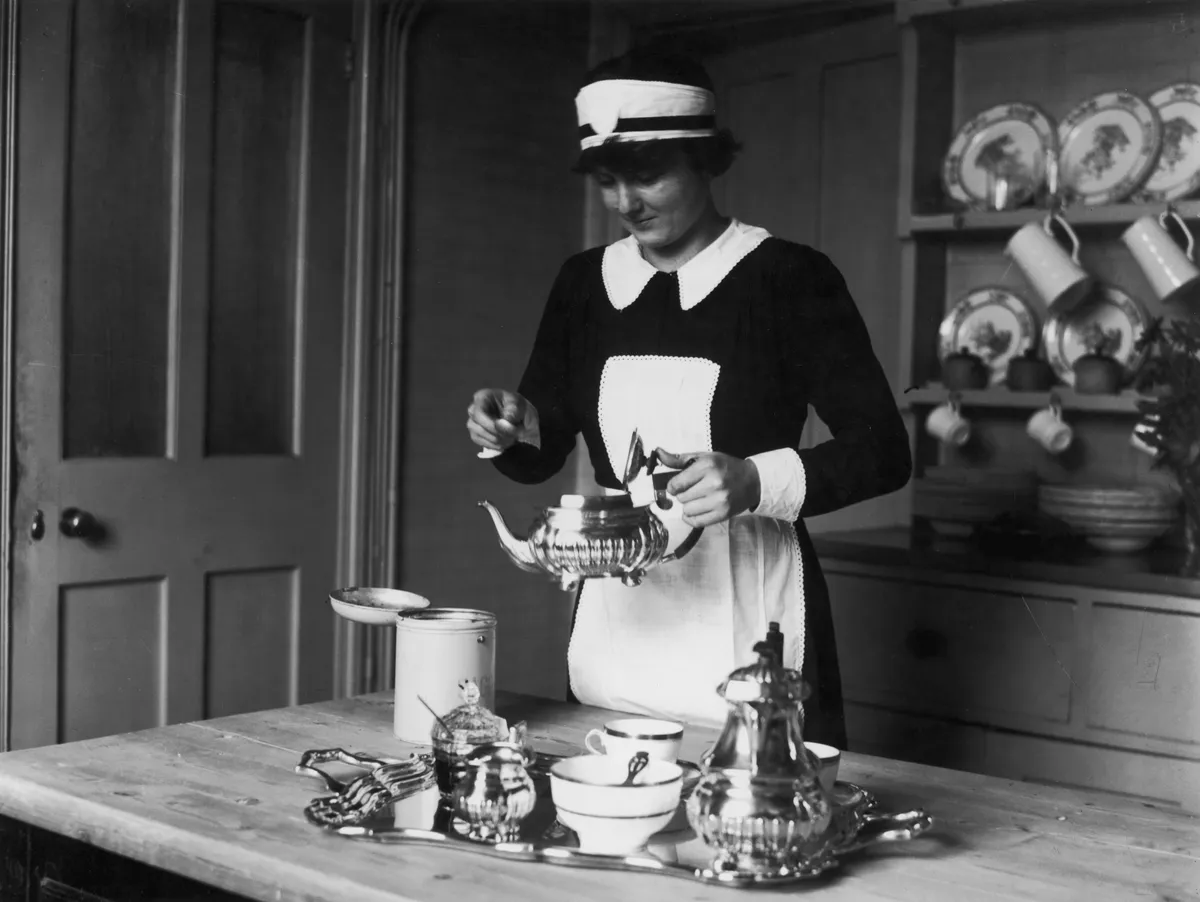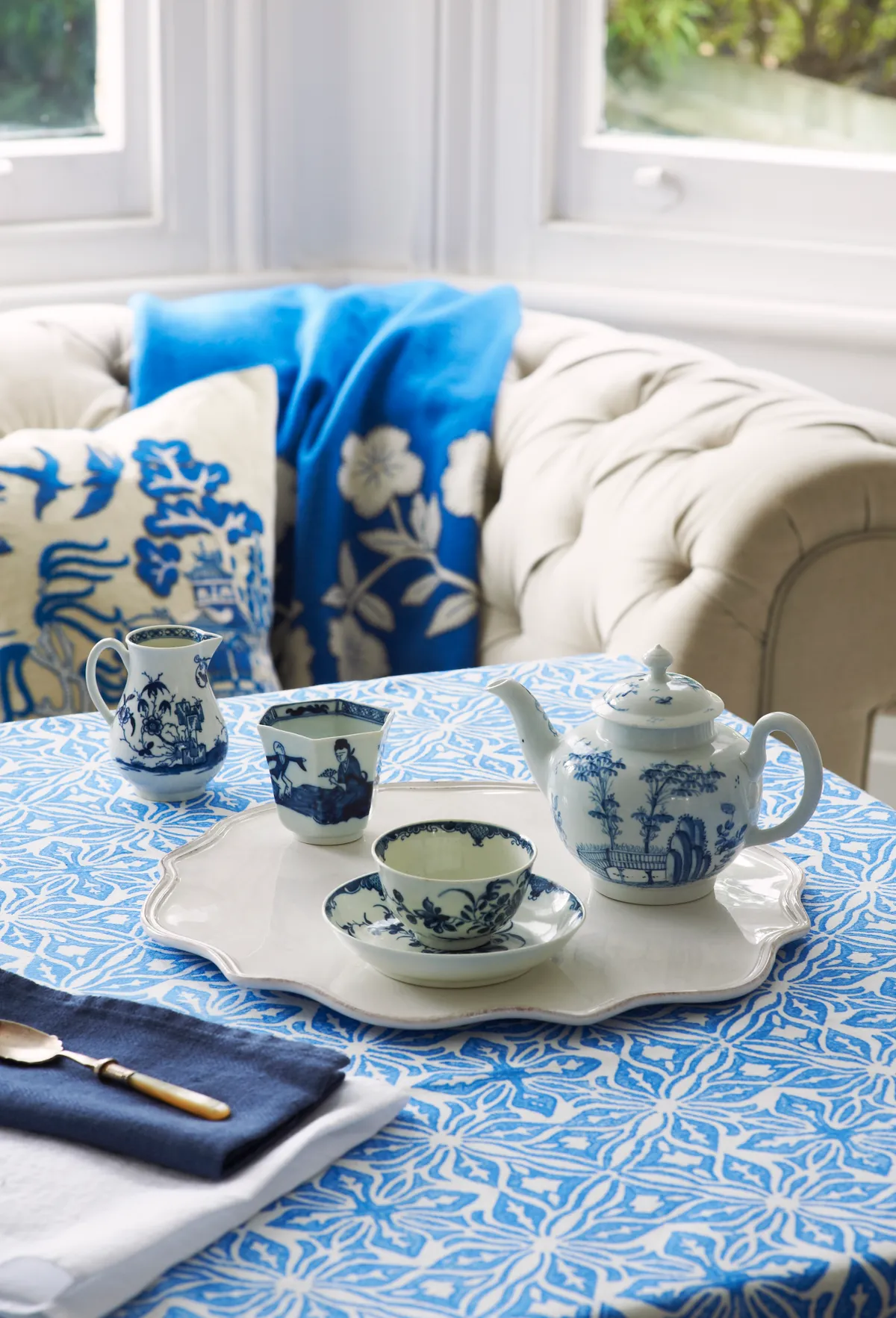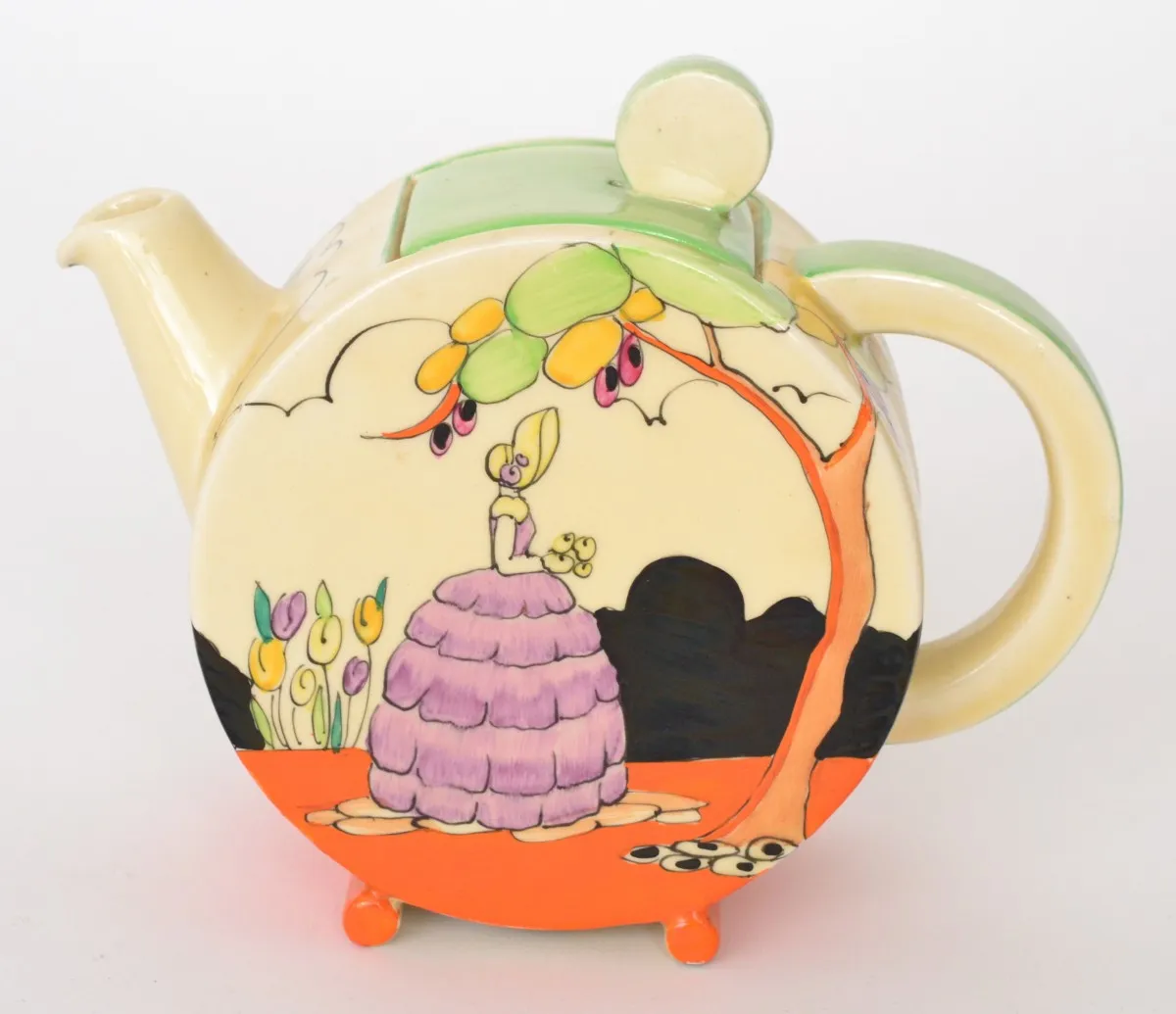Tea brewed in a vintage or antique teapot adds a sense of occasion to your daily brew and we think tastes that bit better. Our guide looks at how to collect beautiful vintage and antique teapots, plus a brief history of tea drinking in Britain
What is the history of tea drinking in Britain?
Before tea drinking was considered Britons’ favourite pastime, it was a rare and expensive commodity that wasn’t popularised until the end of the 17th century. Tea was first advertised for sale in London in 1658 at the Sultaness Head coffee house in Royal Exchange – long after other countries such as Italy, Portugal and China began sipping from teacups of their own.

Befitting an exotic commodity only available to the upper classes, the earliest English teapots were small in size and made from solid silver. However, breakthroughs in ceramics production - particularly the advent of Josiah Wedgwood's creamware in the 1760s and the perfection of bone china at Spode in the 1790s - ensured the middle classes of the later Georgian period were able to turn to Staffordshire for their tea wares. And in 1791, the East India Company announced an end to its once gargantuan imports of Chinese porcelain teapots.
The tea leaf itself, once kept under lock and key in silver or wooden caddies, was becoming readily available. In 1784 the government dropped its long-standing tax on tea and consumption quadrupled. Widespread tea cultivation began in India and the taste for green tea waned in favour of black tea taken with the addition of milk.
What was the first teapot design?
The earliest teapots emerged during the16th century in Yixing, China, when powdered tea made in cupsand ‘tea bricks’ boiled in kettles or pots began to be replaced by loose leaf tea, which required a teapot.
Antique ceramics expert Daniel Chen of Brian Haughton Gallery uses a Yixing teapot. ‘They’re made of slightly porous unglazed earthenware,’ he explains. ‘The flavour of the tea is retained in the body of the teapot, creating a complex aroma, so each teapot is only used for one type of tea.’
Porcelain was developed in China around 2,000 years ago. By the late 17th century, the East India Company began shipping tea to Europe along with porcelain teapots, but the production process remained a mystery to Europeans.
‘In the early 18th century, porcelain imported from the Far East to Europe was such a rare commodity that it was referred to as ‘white gold’,’ reveals Daniel. ‘German manufacturer Meissen employed an alchemist called Johann Friedrich Böttger, who discovered the secret formula in 1708 and created the first true hard-paste porcelain in Europe.’
By the 1710s, Meissen was selling luxury porcelain pieces, including teapots, to the wealthiest Europeans. These pieces, which mostly imitated Chinese and Japanese styles, command high prices today. Expect to pay around £1,500– £3,000 for an early Meissen teapot in good condition.
What were the first English teapots?
The earliest English teapots were silver. ‘Teapots were very small in the early 1700s, because tea was expensive,’ points out Alastair Dickenson, an Antiques Roadshow silver specialist. ‘Small, spherical silver teapots were made – now known as ‘bullet’ style because they were round like a musket shot. By the mid 18th century, tea was taxed at119 per cent and precious leaves were kept in lockable caddies.’ This led to the tea equivalent of bootlegged hooch. ‘Servants in stately homes would sell second- hand tea leaves at the back door,’ reveals Daniel. ‘They were often darkened with lead and this ‘fake tea’ was sold on.’
During the 18th century, Staffordshire potteries and makers, including Josiah Wedgwood and Thomas Whieldon, produced elegant earthenware and creamware teapots. Designers began to experiment with forms and the rococo era resulted in some wonderful nature-inspired teapots, such as Staffordshire ‘agateware’ with marbled bodies and shell relief sides.
With the advent of the neoclassical style and the influence of Robert Adam inthe mid 1760s up to the end of the century, silver teapots became vertical and oval-sided with straight spouts. After the Commutation Act of 1784, the tax was lowered and tea drinking started to filter down to the middle classes. ‘Teapots got bigger and bigger, reflecting the price of tea coming down and tea becoming more available,’ says Sophie Heath, Director of the Museum of Royal Worcester.
The middle classes imitated the lifestyle of the upper classes and the fashion for ‘afternoon tea’ meant that teapots beganto be produced in even greater numbers. ‘In the Regency period, silver teapots became heavy and gilt,’ says Alastair.
But, by the late Victorian period, consumerism began racing away. ‘To compete, companies had to keep up with fashions and amaze people with novelty items,’ says Sophie. The Royal Worcester ‘Aesthetic’ teapot stands out from this era. Madein 1882, it satirises the likes of Oscar Wilde and followers of the Aesthetic movement.
How much does an antique teapot cost?
As with most antiques, provenance is key to value. In 2018, a broken teapot (c1766–1800) with a blue and white palm tree pattern that was bought for just £15 in a Midlands auction sold for £575,000 at Woolley and Wallis because it turned out to be the earliest American-manufactured teapot to have been discovered.It was the work of Staffordshire potter John Bartlam, wholeft England around 1763 to manufacture pottery in America.
Alastair Dickenson believes that now is a good time to buy a silver teapot while prices are low. ‘Fifteen years ago, a good octagonal teapot dating from the 18th century might sell at auction for £20,000 or £30,000 but, today, the same one might only make £8,000 to £10,000.’
Porcelain dealer and collector Anoma Snell says ‘collecting teapots is like gambling. I get a real buzz from finding a beautiful one.’ Anoma sells antique English porcelain online to international customers and is an expert at spotting flaws. ‘Spouts are the weakest point,’ she reveals.
How to collect vintage and antique teapots
If you're keen to start your own collection of antique teapots, read on for tips from antiques expert Roland Arkell of the-saleroom.com

1
Focus on form
Until the marking of ceramics became the norm in the 19th century, most manufacturers didn't stamp their wares.
2
Time is of the essence
The prices of most 18th and 19th-century porcelain and pottery is at a historic low. With only rarities reaching high prices, now is a terrific time to buy.
3
Keep an eye out
With supply typically outweighing demand for standard tea wares, it can pay to be patient and wait for a really good example to come up. Bear in mind that chips and cracks will significantly impact on the value.
4
Stick to your budget
If you are happy to tolerate damage, then this is a collecting area where a modest budget can go a long way. It is perfectly possible to buy a 250-year-old English teapot, with the odd imperfection, for under £100.

Words: Ellie Tennant/Carys Matthews